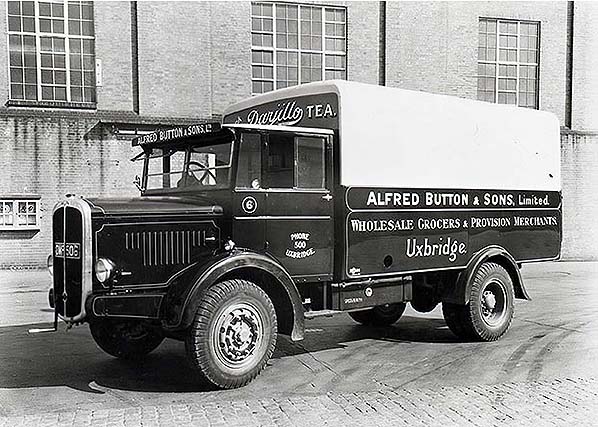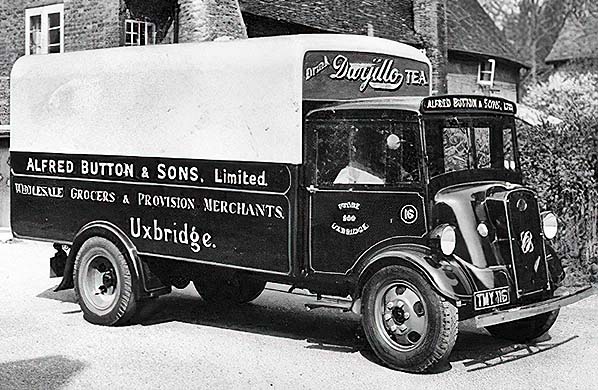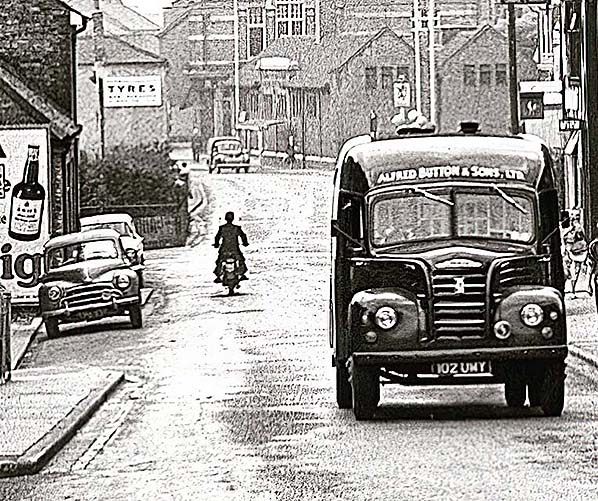
Station Name: UXBRIDGE (Belmont Road)[Source:Nick Catford} Alfred Button established a wholesale grocery business in Uxbridge in 1899. The distribution warehouse was located in Belmont Road, Uxbridge, adjacent to Belmont Road station. It is assumed the depot was built before the station, which opened in 1904. The depot was known by Button as the Metropolitan Depot with a private siding running into it from the Belmont Road goods yard. Button also had a shop at 33 High Street. After closure of the station in 1939 Button took over the station building as an extension to his warehouse complex. Alfred Button & Co became part of the Booker Group (a subsidiary of Tesco) in 1956 but they continued to trade as Alfred Button and Co, eventually becoming Booker Belmont. By 1969 the station building had been demolished and the remaining warehouse was also used by Budgen who had opened a store in the High Street. Alfred Button & Co, Booker Belmont and Budgen were all part of the Booker Group. The warehouse complex was demolished around 1985, and the area was levelled to provide a car park for Sainsbury's supermarket which was then under construction. 
Button's Thornycroft lorry registration number CMP 506, fleet number 6 poses for the camera. The location is thought to be Button's Metropolitan Depot in Belmont Road goods yard. The exact model is uncertain. The overhanging 'snout' suggests the vehicle has a 6-cylinder engine, which would likely be Thornycroft's AC6 unit. Today, vehicles of this size would be classed as vans rather than lorries, or to use the now-obsolete spelling 'lurries'.'Truck' is an American term which is now infiltrating British English. The 'CMP' registration dates from May 1935, by which time Button's were using the telephone number 500. Records from 1914 show Button's telephone number was, then, 91 so by 1935 additional lines had been added. The number on the cab door is stylised but at the time it was normal to quote the telephone number before the exchange name, for example '500, Uxbridge'.This is a reflection of an age when the vast majority of telephone calls were local and therefore exchange names were of secondary importance.
Photo from Alfred Button Archive 
Posing for the camera in this view is Button's Fordson 7V registration number TMY 116, fleet number 16. The registration dated from January 1949. The semi forward-control vehicle is fitted with a Perkins diesel engine. As with the Thornycroft it may be noticed that fleet numbers tied-in with registration numbers. Right up until the change of registration number format in 2001 it was very common for fleet operators to reserve registration numbers in advance to enable the tie-in with fleet numbers. Omnibus companies were particularly fond of the practice as it made vehicles parked in depots quicker to identify. Indeed London Buses still do, with the 'Borismaster' fleet having Northern Ireland registration numbers. The 'Fordson' name derived from 'Henry Ford & Son Ltd' (inc. in the USA), an offshoot of the Ford Motor Company set up to produce farm tractors and commercial goods vehicles. The 'Fordson' name was dropped for goods vehicles in 1957 and disappeared entirely in 1964 when all branding became simply 'Ford'.
Photo from Alfred Button Archive  A Button's Ford Thames ET6 (the '6' meaning 6-wheel) van is seen here going about its business at an unidentified location. Its registration number dates from April 1959 and presumably it carried fleet number 2. The Thames ET series was the replacement for the Fordson 7V, production of which latter ceased in 1957 by which time the 7V looked decidedly dated. Vehicle 102 UMY is fitted with flashing indicators, which were by no means universal at this time, and a Ford 4-cylinder 3.6 litre diesel engine (hence the stylised '4D' badge on the grille) which managed 70 brake horsepower; quite feeble by today's standards but compensated for by relatively low gearing. The 'Thames' name was taken from River Thames, the bosses at Dagenham wanting a range name which people could associate with. On the left and looking rather drunken beside the Haig advertisement is a Morris Oxford MO, behind which is what appears to be a Vauxhall Victor F Series. In the background is a Morris 1000, apparently a pickup with canvas tilt in position,
Photo from Alfred Button Archive
 Home Page Home Page
|
